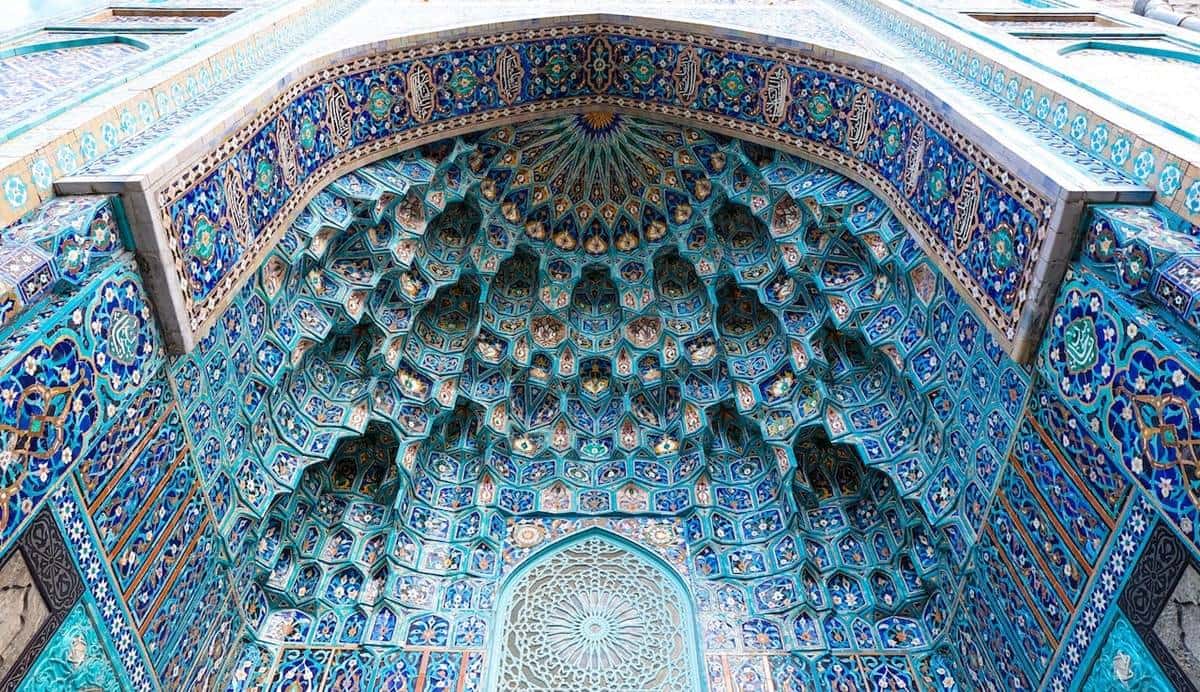A Brief History of Mosaics
Mosaics have been with us since the dawn of civilization and have been used through the centuries for political, religious, and personal reasons. From the floors of ancient Middle Eastern temples to the walls of Byzantine churches and into the present day in the form of our stunning Turkish Mosaic Lamps the mosaic has proven its versatility, durability, and beauty time and time again.
Origins of the Mosaic
The earliest known mosaics were unearthed in what we now refer to as ancient Mesopotamia and are thought to be nearly as old as the Pyramids of Giza. These mosaics were composed of colored stone, ivory, and sea shell fragments. The ancient Greeks were the next civilization to adopt this art form with many of their stunning floor mosaics from thousands of years ago surviving to this day.
Across the Mediterranean from Greece, the Ancient Egyptians of the so-called "New Kingdom" (15th - 10th centuries BC) also adopted mosaics and made widespread use of them in their temples. And, of course, the most famous purveyors of the art form were the ancient Romans who decorated their temples, public buildings, baths, and aristocratic villas in every corner of the empire with mosaics.
Roman mosaics tended to depict either mythic, civic, or erotic scenes, depending on the setting. The pagan gods Jupiter, Juno, Minerva, and Neptune were common subjects as were military victories, gladiatorial battles, and more personalized subject matter in the bedrooms of private homes. In fact, the Syrian government recently discovered a huge 1,600-year-old Roman floor mosaic depicting Neptune and forty of his mistresses.
Recent archaeological evidence strongly suggests the Romans also used mosaic lamps to illuminate city streets at night. These mosaic lamps consisted of a mosaic shade and bronze or brass metal components and were fired by oil.
In some very real ways, they were the ancient precursor to the lamps that have become such an important part of Turkish culture. And that shouldn't be a surprise since modern-day Istanbul used to be called Constantinople (after the Roman Emperor Constantine) and was the capital of the Eastern Roman Empire for 1,100 years.
Byzantine Mosaics
A common myth is that the Roman Empire came to an end in the year 476 AD when the Gothic king Odoacer sacked the city of Rome and installed himself as leader. In fact, the Roman Empire had been divided for administrative purposes into Western and Eastern halves in 395 AD by Emperor Diocletian, and the Eastern half, known commonly as the Byzantine Empire, endured for another 1,000 years.
In an attempt to separate themselves from what they saw as the decadent tendencies of the West, the Byzantines turned away from the type of highly realistic sculpture and painting practiced in Rome and adopted a more stylized approach to art that saw them embrace and expand on the expressive possibilities of mosaics.
Byzantine artists also lifted the mosaic from the floor, which is where you would find most Western Roman mosaics, and put them on walls in aristocratic villas and Byzantine churches. Because they were no longer being stepped on constantly these wall mosaics could be, and were, made of more delicate materials including mother of pearl, gold leaf, and different colors of glass. Nearly every Byzantine church in modern-day Turkey is lavishly decorated with wall mosaics depicting various aspects of the Christian faith.
Byzantine artists also pioneered the creation of portable mosaic icons. These portable wonders were often moved from room to room or were taken with the owner when they embarked on long journeys to help ensure safe travels. Some of these incredible pieces of art survive to this day. The level of detail and the quality of the workmanship are truly astonishing and a testament to the skill of the ancient artisans.
Renaissance Mosaics
The period of the Renaissance is known for producing some of the most famous painters and sculptors in human history including Michelangelo and Leonardo. But the art of the mosaic was not lost upon the Renaissance artist.
One of the finest examples of Renaissance mosaic art is the Baptism of Christ mosaic in the Museu de Sao Roque, Lisbon by the artists Agostino Masucci and Mattia Moretti. Created during the late stages of the Renaissance the mosaic mural depicts Saint John baptizing Christ while an angel looks on. The detail achieved by the artists is staggering and if you didn’t know this was a mosaic you would likely assume it was a painting.
Into the Modern Era
Interestingly enough the place where you are most likely to see a contemporary mosaic is not in a church or a health spa or on the side of a municipal building, but rather in the home. While the mosaic has been replaced by other mediums for the purposes of political or religious messaging it has found new life in the contemporary kitchen. Most custom kitchen mosaics comprise intricate geometric patterning, but occasionally you will find one that depicts flowers or pastoral scenes. Mosaics also have a habit of popping up in high-end contemporary bathrooms.
Wholesale Mosaic Lamps from Paykoc
The mosaic has been one of our constant companions since the dawn of civilization and continues to bring us immense joy whether in the form of a kitchen backsplash or dazzling Turkish Mosaic Lamps. If you are looking for a product that will breathe new life into your gift shop, explore the selection of Turkish mosaic lamps available to order in Paykoc Imports' online store.

 Default Currency
Default Currency
